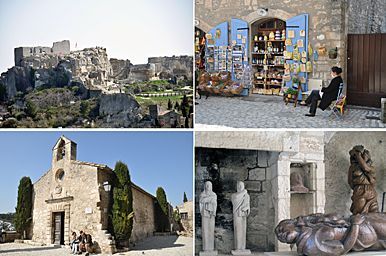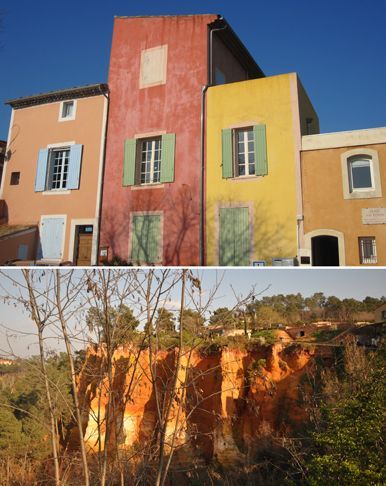Article
Visiting the Villages of Provence with Viator
Author(s):
Rail travel has a warm place in the hearts of Francophiles, but is not the ideal mode of transport when trying to reach, say, a remote mountain village like Provence. You could rent a car, but Peter Mayle's beloved perchés are hard to find, and parking stinks (pardon my French). But there is another way...
Photography by the authors
Rail Europe has such a strong presence in France tourists tend to go places based on the convenience of rail. But what if a remote mountain village in, say, Provence has no rail service? You can rent a car but some of those villages perchés, so beloved on high by writer Peter Mayle are hard to find and parking may be difficult.
We had taken long European bus tours with companies like Trafalgar, Tauck and Maupintour but we doubted we would have even a whole day to spare if we wanted to see the little villages of the Luberon; we were, after all, typical, somewhat rushed, American tourists.
We’d noticed the tour company Viator in Rome, in Bucharest and finally in France. A few minutes at its website solved our needs. It meant getting to Avignon earlier than planned, but the Mercedes minivan came willingly to our FormulaF1 motel (owned by Motel 6) despite it’s being in a far-flung part of town.
“Hi! I’m Laurent,” says the guide-driver. We thought he’d said Johann. “Like Johann Sebastian Bach?” we say, name-dropping. “No,” he replies, “Like Laurent of Arabia. I’m Laurent of Avignon!” So we’re off with Laurent and three other passengers.

He gives us the 160 feet-high Pont de Gard as an extra treat, on our way to Les Baux. The tri-leveled aqueduct, built by the Romans in the middle of the 1st century AD, crosses the river Gard to bring water from the hills 30 miles from Nîmes. Rome’s Coliseum is the only Roman construction higher. Built entirely without mortar, it took 1000 Romans three years. It is today a UNESCO World Heritage Site.
Now we’re heading for Les Baux, a spectacular hilltop village built of local limestone in the tenth century. Asked how many people live there now, Laurent replies, “Two hundred with maybe 200 shops!” A brochure informs us that the fortress village was erected by the Lords of Les Baux who were “descendants of Balthazar, one of the Three Wise Men, of the family line of the Grimaldi Prince of Monaco.”
They sound like characters in a Woody Allen movie but the red flag of Monaco does fly over the castle in the village.

Aluminum ore was discovered here in 1821 and was given the name bauxite. The old quarries now are used to project giant slide shows as if this quaint delightful village needed anything extra to draw its million visitors every year. Les Baux felt contrived, ancient as if we were walking before the world on a stage designed by Walt Disney but the next village touched us as real as if we had become people living genuinely in the Middle Ages. We had come to Gordes.

This 12th century village of tall limestone buildings and winding cobbled streets sits on a rocky bluff high above the Imergue valley. It has the obligatory war memorial to the War to End Wars, the war that essentially deprived Europe of two male generations.

It has a castle and a village square where locals sit contentedly on a warm day contemplating all the diverse considerations of the French people. Prendre le temps pour la vie sure seems like a good idea.

Gordes, like many of the hilltop Alpilles villages, lost population between the two world wars. It was rescued by artists and by the advent of tourism. France is the most visited country in the world a guide, once told us, and Provence is now the most visited part of France. Artists come, they say, for that special light “found only in Provence.”

We found that light, too, in our last village, Roussillon, six miles to the east. The area has rich deposits of ochre, something known since Roman times. A huge industry in extracting the yellow-orange powders sprang up in the 1700s until synthetic fabrics and dyes became the rage. Laurent, our guide, brings us here at the end of the day as the sun is sinking. As the light plays over the quarry cliffs it is easy to believe there are 17 shades of ochre to the colors. “Ochre was the village’s lifeblood,” he says.

It has been a long, interesting day. We head the 45 miles back to Avignon. Past fig and olive trees and a single shepherd walking along with two dogs and 750 sheep. “It is like a scene from the Bible,” we tell Laurent. “Except,” says our guide, “we’re coming up to the famous Castle Donald.” He points out the Golden Arches and laughs with us at his own joke.
“That’s a kinky castle over there, says Laurent, pointing to his left. “It was once owned by the Marquis de Sade!”
“The Marquis wasn’t kinky,” says the Australian in our small group, “just indiscrete.
The Andersons, who live in San Diego, are the resident travel & cruise columnists for Physician's Money Digest. Nancy is a former nursing educator, Eric a retired MD. The one-time president of the NH Academy of Family Practice, Eric is the only physician in the American Society of Travel Writers. He has also written five books, the last called The Man Who Cried Orange: Stories from a Doctor's Life.




